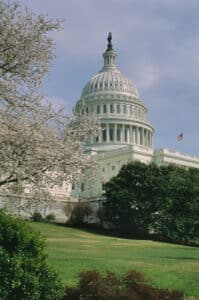EPA Sends 7th Drinking Water Infrastructure Needs Report to Congress
 Yesterday (9/6), EPA sent its report on the 7th Drinking Water Infrastructure Needs Survey and Assessment (DWINSA) to Congress. The report provides extensive information on EPA’s methodologies for determining the national need for drinking water infrastructure, as well as a breakdown of the infrastructure needs in each of the 50 states, U.S. territories, the District of Columbia (D.C.), and Puerto Rico. The 7th DWINSA estimates that $625 billion will be needed for infrastructure improvements over the next 20 years. This is a 32% increase over the 6th DWINSA ($472.6 billion) or a 14% increase in need if adjusted for inflation ($546.6 billion in January 2021 dollars).
Yesterday (9/6), EPA sent its report on the 7th Drinking Water Infrastructure Needs Survey and Assessment (DWINSA) to Congress. The report provides extensive information on EPA’s methodologies for determining the national need for drinking water infrastructure, as well as a breakdown of the infrastructure needs in each of the 50 states, U.S. territories, the District of Columbia (D.C.), and Puerto Rico. The 7th DWINSA estimates that $625 billion will be needed for infrastructure improvements over the next 20 years. This is a 32% increase over the 6th DWINSA ($472.6 billion) or a 14% increase in need if adjusted for inflation ($546.6 billion in January 2021 dollars).
The Safe Drinking Water Act (SDWA) requires that EPA conduct a survey and assessment every four years to examine the need for infrastructure improvements and maintenance at public water systems throughout the country. The data for the 7th DWINSA, which was collected by EPA, states, and water systems in 2021, represents infrastructure projects that are necessary over the next 20 years for water systems to continue to provide safe drinking water to the public. These projects include infrastructure needs that are eligible for, but not necessarily financed by, the Drinking Water State Revolving Funds (DWSRF), including the installation of new drinking water infrastructure and the rehabilitation, expansion, or replacement of existing infrastructure. The 7th DWINSA is the largest and broadest since its inception in 1995 and includes new data on lead service lines (LSLs), operator workforce concerns, and pipe and storage tank construction materials.
The findings of each DWINSA are used to determine the funding allotments to each state under the DWSRF. By law, each of the 50 states, D.C., and Puerto Rico are guaranteed a minimum allotment of 1% of the total amount available to states under the DWSRF. The U.S. territories share 1.5% of the total amount. The report to Congress states that there are only minor changes in these percentages in the 7th DWINSA compared to the previous. Starting in fiscal year 2023, this formula will be used to distribute the DWSRF Base Appropriations, the Bipartisan Infrastructure Law (BIL) General Supplemental, and the BIL Emerging Contaminants funds.
EPA developed a separate allocation formula for the DWSRF BIL Lead Service Line Replacement (LSLR) fund using the information collected in the 7th DWINSA on service line materials. America’s Water Infrastructure Act of 2018 mandated that EPA include the cost of replacing lead service lines (LSLs) in future drinking water infrastructure needs surveys. To meet this requirement, EPA asked all public water systems participating in the 7th DWINSA to provide information on the number of service lines and connectors in their system, as well as the composition of the materials of these lines if known. The 7th DWINSA projected the number of LSLs in the United States at 9.2 million at a replacement cost of approximately $50 billion to $80 billion (2021 dollars).
The report highlights that the Agency recognizes that states and communities are still working on identifying LSLs. To account for this developing data, states are being provided with a one-time opportunity to adjust their service line data in fall 2023. The updated information will be used in distributing DWSRF BIL LSLR funding to states in 2024 and moving forward.

